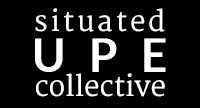Unable to attend the American Association of Geographers’ Annual meeting due to travel problems, Mary Lawhon reflects on the retirement of geographer and political ecologist Dianne Rocheleau in this commentary. Drawn from notes for a presentation that unfortunately did not happen due to flight delays, this commentary focuses on Dianne’s generosity as a scholar and her contributions to the development of Urban Political Ecology.
I stayed in the airport a lot longer than I otherwise would have, all of Wednesday and Thursday morning, hoping to have a chance to say to Dianne in person and in public a most sincere thank you. But as I finally gave in to nature in its many forms – a storm trumping the wonders of flight, a baby and toddler needing more than airport chicken nuggets – I thought Dianne would certainly have not just understood, but wanted us to go home. So, a few thoughts constructed from my notes instead.
First, a list of things I got from Dianne:
Academic fashion sense, including unruly curls and a fondness for scarves (though this serves me less well in Florida).
Relational thinking and specifically rooted networks (including work with Miriam Chion on rooted cosmopolitanism)
The need to listen to voices on the ground even when they don’t quite make sense to us. This approach for me is best exemplified in the recently published story which she told often while I was at Clark, about a Kenyan women narrating her wedding as an answer to an inquiry about her relationship with the environment. It wasn’t that Dianne just “took her at her word” and reported it as true, as representing an unexplained alternate rationality. Dianne waited to publish this until it made sense to her; not that it was necessarily “her sense”, but until sense could be made through understanding from another position. This is related to a point which international scholars have noted to me about Dianne: she could make you think differently, think anew, by engaging with everyday people rather than (re)citing the canon of dead white men.
But the big thing that I want to make sure gets its due during these panels – and I suspect is the gap Katherine was hoping I would speak into – is attention to one of Dianne’s most under recognized contributions: urban political ecology.
Most presentations of the genealogy of UPE start with 1996. This was a seminal year, but only one of the keystone texts (Erik Swyngedouw’s piece from Capitalism Nature Socialism) typically makes it into the narrative. Those of you in the audience probably know to what I refer: Feminist Political Ecology, which included urban chapters, was published in 1996 too.
For many of us, Dianne’s relationship with UPE came out most clearly during the Urban Ecology course (one which I TA’d twice, a feat I think few can claim, and a fate I chose the second time around knowingly!).
Some of the things I remember from that course:
Dianne’s interest in and enthusiasm for technology. While many kindred thinkers seemed suspicious of the correlation between modernity, masculinity and technology, Dianne got excited by the engineer’s charts of waste and water flows. I think this was related to a sense of inspiration in/of/from science-fiction, the work of Donna Haraway, etc. But for me, it also represented a belief and possibly even optimism about human ingenuity, even in the forms conflated with masculinity.
This seems related to the fact that while on the field trips to NYC, I regularly went home and crashed at the end of our day. But Dianne was energized by the city, the people, the density, the technology, the buzz. I imagine she was regularly out as late as many of our students.
On these trips, Dianne let students wander the city, to find their own way. In an era of hyper-legality around student fieldtrips, hand-holding study abroad programs and so on, Dianne put students in the field without knowing, planning, and supervising every step. This, let me note from my own years, included what might be considered some mishaps: we lost students in the streets of NYC. We once learned of a student taking his classmate – a reluctant non-traditional (older) student who was also blind – to an evening strip show. But giving students a chance to navigate their own was one of the most valuable offerings.
I think of this as representative of the trust and faith Dianne placed in the universe: weeks after returning to the US from many years in South Africa, I was tasked with driving the Clark vans for these escapades. Though I was well accustomed to rowdy and full kombi rides, this experience gave me much greater sympathy for drivers’ ability to navigate the hubbub.
These small stories might not seem as weighty as citing Marx or Harvey in narratives of UPE. But for me, they capture a sense of critical optimism about human capacity; of learning through being and doing; of being thrown in over your head and finding your own way. Such lessons are not atheoretical, but they are personal; they are memorable; they change not just what we think but who and how we are.
I can’t conclude without a tempered comment, noting the progress but also how far we have to go: thank you, Dianne, for making it easier – still not easy, but easier – for me to be a woman in the academy; for me to be able to say that there is merit not just to studying the South, but thinking from the South; for your contributions to my own thinking, being and doing, and your foundational work in UPE, no matter what some genealogies say.
